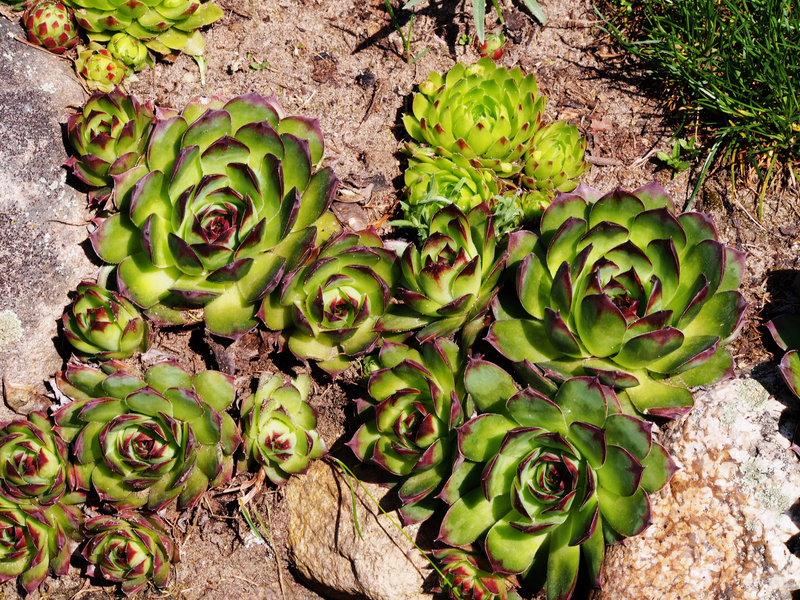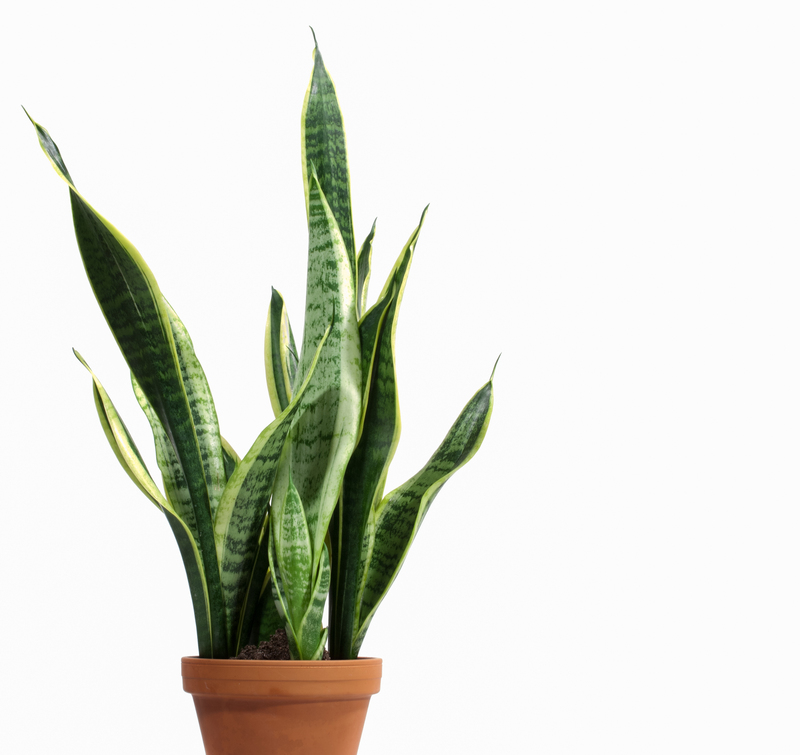Journey to Gorgeous Orchids: Care Instructions
Posted on 19/05/2025
Journey to Gorgeous Orchids: Comprehensive Care Instructions
Orchids are admired across the globe for their remarkable beauty, exquisite shapes, and alluring fragrances. However, many aspiring plant owners find themselves hesitant to bring orchids home, fearing that their care requirements are too complex. Fear not--whether you're a beginner or a seasoned horticulturist, this orchid care guide will demystify the process and help you embark on your own journey to gorgeous orchids. Mastering the essentials of orchid maintenance not only rewards you with breathtaking blooms but also fosters a life-long love affair with these exceptional plants.

Understanding Orchids: The Basics
Before diving into the details of orchid care, it's important to develop a clear understanding of what makes these flowers unique. Orchids comprise one of the world's largest and oldest plant families, boasting more than 25,000 naturally occurring species and over 100,000 hybrids. Their natural habitats range from humid rainforests to arid grasslands. Thus, the journey towards growing exquisite orchids begins with recognizing their diverse requirements.
Common Types of Orchids for Beginners
- Phalaenopsis (Moth Orchid): Renowned for their long-lasting blooms and resilience, these are arguably the best choice for novices.
- Cattleya: Famed for their vibrant colors and heavenly fragrance, they respond well to attentive care.
- Dendrobium: Their adaptability makes them a staple in many living rooms and greenhouses.
- Oncidium: Often called "dancing lady orchids," they delight growers with their prolific, butterfly-like flowers.
Regardless of the type, proper care routines are essential for stunning orchids. Let's explore the key aspects that set them apart from conventional houseplants.
Essential Orchid Care Instructions
1. Light: Mimicking Their Natural Habitat
Light is a crucial factor in achieving healthy, beautiful orchid blooms. Unlike many traditional houseplants, most orchids are epiphytes--they thrive attached to trees, basking in filtered sunlight beneath dense canopies.
- Bright, Indirect Light: Place your orchids near an east or west-facing window. South-facing exposures are suitable if filtered by a sheer curtain.
- Too much direct sun can scorch leaves, leaving permanent damage, while insufficient light impedes flowering.
- Leaf Color: A healthy orchid's leaves should be light to medium green. Dark green indicates low light, while yellowish hues signal too much sun.
2. Watering: The Art of Balance
Watering is often the trickiest part in the care of orchids. Overwatering causes root rot--the leading killer of homegrown orchids. Underwatering, on the other hand, leads to shriveled leaves and stunted flowers.
- General Rule: Water when the potting mix is almost dry, but never parched. This typically means every 5-10 days, depending on species and climate.
- Use Room Temperature Water: Cold water shocks orchids and impedes growth; always use tepid water.
- Avoid letting water stand in the crown (the area where leaves join the stem), as this encourages rot.
- Tip: Watering in the morning allows foliage to dry by nightfall, reducing risks of fungal diseases.
3. Humidity: Creating the Tropical Oasis
The key to thriving orchids lies in replicating their naturally humid environments. Most common orchids prefer a humidity level of 40-70%.
- Humidity Trays: Place a tray filled with pebbles and water beneath your orchid pot to boost humidity without drowning the roots.
- Grouping plants together also raises ambient humidity.
- In drier climates, consider using a room humidifier, especially during winter months when central heating dries the air.
4. Potting Media: Choosing the Right Home
Unlike typical potted plants, orchids flourish in specialized growing mediums that promote aeration and rapid drainage. The best orchid potting media include:
- Bark chips (fir, pine, or cypress)
- Sphagnum moss
- Coconut husk fiber
- Perlite or pumice
Ensure that the chosen medium is loose and airy--this enables healthy root growth and prevents waterlogging. Re-pot your orchids every 1-2 years, or when the medium breaks down and loses its structure.
5. Fertilizing: Feeding for Blooms
Like all flowering plants, orchids benefit from periodic fertilization. The trick is moderation--too little, and growth suffers; too much, and roots burn.
- Use a balanced, water-soluble orchid fertilizer (20-20-20 or similar) every 2-4 weeks during the active growing period (spring and summer).
- "Weakly, weekly": Dilute fertilizer to one-quarter of the recommended strength for each application.
- Flush the potting media with plain water every fourth week to remove salts that can accumulate from fertilizers.
Seasonal Orchid Care: Key Milestones in the Orchid Calendar
Spring and Summer: The Growing Seasons
- Increase watering and fertilization as your orchid enters its active growth phase.
- Monitor humidity levels and ensure adequate air movement around plants.
- Inspect for pests such as aphids, spider mites, and scale insects.
Autumn: Preparing for Dormancy
- Reduce fertilization and watering as growth naturally slows.
- Maintain light levels while protecting from seasonal drafts.
- Remove dead or dying flower spikes and leaves to prevent disease.
Winter: Rest and Renewal
- Further reduce watering--orchids need less moisture in the cooler months.
- Maintain humidity with trays, misting, or humidifiers.
- Provide supplemental light if natural daylight is insufficient.
Common Problems: Orchid Troubleshooting Guide
Despite the best intentions, even experienced orchid growers occasionally encounter challenges. Here's a quick troubleshooting guide for the most frequent issues on your journey to gorgeous orchids:
Leaf Problems
- Yellow Leaves: Usually caused by overwatering or sudden temperature changes.
- Wrinkled Leaves: Indicate underwatering or root distress--check root health and potting mix.
- Blackened Tips: Often due to fertilizer burn or salt buildup.
Flower Issues
- Bud Blast: Buds wither and drop before opening, commonly due to environmental stress such as low humidity or rapid temperature changes.
- Short-Lived Blooms: Insufficient feeding or low humidity may be to blame.
Root Rot
- Mushy, black or brown roots: Immediate action needed! Remove the orchid from its pot, cut away affected roots, and repot in fresh, dry medium.
- Always ensure pots have adequate drainage holes.
Advanced Orchid Care Tips: The Pathway to Spectacular Blooms
Once you've mastered orchid basics, consider the following tips to take your orchid care to the next level:
- Repotting: Repot promptly after the bloom cycle or when roots outgrow the current container.
- Encouraging Reblooming: After blooms fade, trim spikes just above a node to stimulate new flower production.
- Periodically clean leaves with a damp cloth to enhance photosynthesis and prevent pests.
- Monitor Microclimates: Minor fluctuations in temperature and humidity can trigger blooming in many species.
Eco-Friendly and Sustainable Orchid Care
- Choose sustainable potting materials (coconut husk, recycled bark) whenever possible.
- Collect rainwater for watering to avoid chemicals found in tap water.
- Refrain from using harsh pesticides; opt for neem oil or insecticidal soap for pest control.

The Rewards of a Beautiful Orchid Collection
Your orchid care journey is a gratifying one. With attention and a little patience, you'll witness these plants transform from modest greenery into spectacular bursts of color. As your collection grows, you'll not only enjoy their exquisite flowers but also cultivate mindfulness, patience, and a deeper appreciation for the natural world.
In summary, successful orchid nurturing requires:
- Providing adequate, filtered light
- Practicing careful, measured watering
- Maintaining high humidity and good air flow
- Repotting as needed with the appropriate medium
- Feeding regularly but sparingly
- Observe for pests or diseases and act promptly
Remember, every plant is unique. Take time to observe your orchids, learn their preferences, and adapt your approach as needed. That's the true spirit of the journey to gorgeous orchids--a blend of science, art, and love for nature. May your path be filled with vibrant petals, lush leaves, and the endless satisfaction that comes from nurturing some of the world's most remarkable blooms.
Frequently Asked Questions: Orchid Care Guide
How often should I repot my orchid?
Repotting is recommended every 12-24 months, or when the potting mix begins to break down. Signs include roots escaping the pot or a soggy, compacted medium.
Why are my orchid's leaves turning yellow?
Common causes include overwatering, lack of light, or natural aging (old bottom leaves yellow and fall as part of the plant's cycle).
Can I grow orchids outdoors?
Many species thrive outdoors in suitable climates. Ensure protection from direct midday sun, cold drafts, and excessive moisture.
How do I trigger my orchid to rebloom?
Slight drops in nighttime temperature, consistent feeding, and pruning spent flower spikes just above a node can all encourage repeat blooming.
Embark on your orchid care journey today--stunning blooms and botanical wonder await!
```
